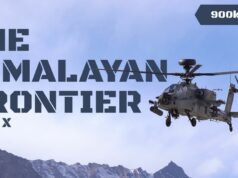The Cabinet Committee on Security (CCS) has cleared two big defence proposals. One is on buying 31 MQ-9B or Predator drones made by General Atomics. And the other is to make two nuclear attack submarines in India.
Predator Drone Capabilities
The MQ-9B or Predator drone is a great asset with huge capabilities, says Vice Admiral SN Ghormade (Retd). Surveillance is one facet of that capability, given the maritime area under the sphere of Indian Navy’s operations.
The primary area of operations for the Indian Navy extends from the east coast of Africa up to South China Sea. And down up to Australia. This is a vast area for surveillance.
“Almost one lakh ships, both combat and merchant vessels, transit the area. The MQ-9B drone provides an endurance of 36 hours at heights of up to 30,000 to 40,000 feet. It gives accuracy of positioning and the maritime domain awareness, which really helps,” Vice Admiral Ghormade (Retd) told StratNews Global.
Cost-effective Option
There’s also the cost factor. Earlier, ships were used for surveillance. The Indian Navy has had mission-based deployments at various choke points, which began in 2018. Sustaining such a vast area of operation was an expensive proposition, says the Navy’s former vice-chief.
Same is the case with deploying P-8i aircraft, which is primarily an anti-submarine platform that has an added dimension of surveillance, he added. The MQ-9B will fill that gap.
‘Numbers Adequate’
Of the 31 drones, the Navy will get 15, and the Army and the Air Force will share the rest equally. For the Navy, the number is adequate to meet our present day requirements, says VAdm Ghormade (Retd). According to him, the whole purpose would be to build indigenous capability.
Another facet of the Predator drones is their armed capability. Their ability to carry weapons. “These capabilities actually add to the surveillance aspect: first pinpoint the target and then you can launch a missile which is onboard. And all this with endurance much more than an aircraft.”
The drone deal is expected to cost $3.1 billion but the amount may well be worth it.
Nuclear Attack Submarines
The other big approval by the CCS was to make two nuclear attack submarines. These are offensive platforms, which have high speeds.
These will be built at the Ship Building Centre in Visakhapatnam. The project, which is expected to be about 90 per cent indigenous, will cost about ₹45,000 crore rupees.
“These are nuclear-powered submarines (also called SSNs) but they carry conventional missiles. This actually gives the submarine unlimited endurance, only limited by the machinery, the fatigue of the crew or rations,” says VAdm Ghormade (Retd).
Nitin A. Gokhale is a media entrepreneur, one of South Asia's leading strategic affairs analyst and author of over a dozen books so far on military history, insurgencies and wars.
Starting his career in journalism in 1983, he has since led teams of journalists across media platforms.
A specialist in conflict coverage, Gokhale has covered the insurgencies in India’s North-East, the 1999 Kargil conflict and Sri Lanka’s Eelam War IV between 2006-2009.
Gokhale now travels across the globe to speak at seminars and conferences, and lecture at India’s premier defence colleges. He has founded three niche portals, Bharatshakti.in, stratnewsglobal.com and Interstellar.news.




